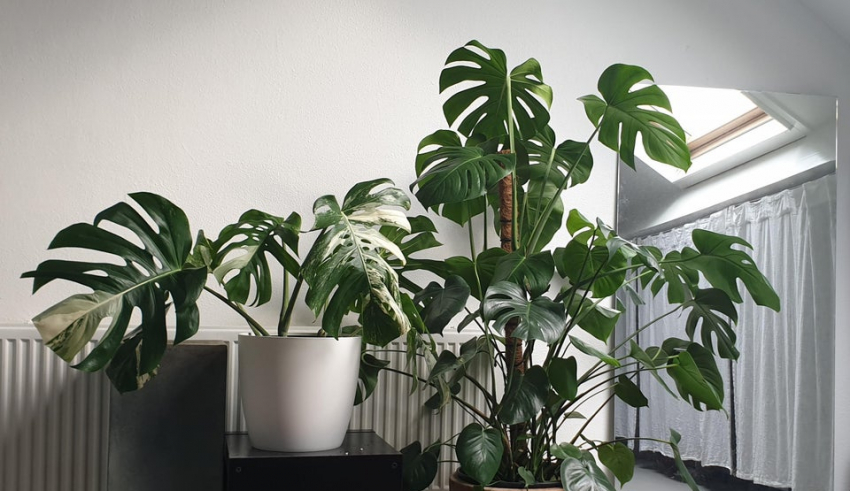
Can you tell which one is Monstera Adansonii or Deliciosa? You must distinguish one variation from another by its distinctive characteristics to know which type of plant you are interested in.
You can learn more differences between the both in this article. However, you must know that Monstera deliciosa differs from an adansonii in terms of pricing, the height of the plant, and growing habits.
The size, shape, and edges of the leaf, along with the perforations, differ significantly. The stem structure, root system, and method of propagation of these two plants, however, show some similarities between them. Continue reading this article to find out more.
Table of Contents
Key differences between Monstera Adansonii and Deliciosa
It is not too hard to compare Monstera Adansonii vs Monstera Deliciosa because they differ significantly from one another. Nevertheless, you should tread cautiously because some plant stores will purposely label one monstera as another to make a huge profit.
It is said that this mainly occurs as a result of the substantial price variations between the monstera adansonii as well as monstera deliciosa. And the same is true of other pricey, uncommon Monstera plants.
Therefore, understanding the distinctions between monstera deliciosa and monstera adansonii is the best method to prevent falling victim to this. Do not be fooled by the various fake adverts that are present, whether they are done on purpose or not. The Monstera adansonii and deliciosa can be distinguished from one another by the following characteristics.
1. The Leaf’s size
The size of the leaves is one of the key characteristics that distinguish Monstera deliciosa from adansonii. Compared to deliciosa, adansonii generally has smaller leaves.
The ovate leaves of Monstera Adansonii can just reach a length of 25–70 cm, which is around 10 to 30 inches while its lamina generally enlarges to a width that is between 6 and 18 inches and 15 to 45 centimeters wide.
The shiny, green leaves of deliciosa, on the other hand, stand out and frequently appear to be huge. Normally, its leaves have an initial length of 25–90 cm (10–35 in) and a width of 25–70 cm (10–30 in).
In their natural environment, leaves can potentially grow to a height of 100 cm (40 in). Remember that under some conditions, the leaf size fluctuates. As a result, in ideal conditions with enough water, sunlight, and fertilizer, plant leaves may appear large. If not, leaves could get smaller.
2. The Leaf Holes
The holes that separate Monstera deliciosa from Monstera adansonii are a second identifying characteristic. These two varieties’ holes differ in terms of their sizes, forms, as well as numbers.
Adansonii has holes that vary in size and form but are typically elliptical. The series of holes are smaller, but they appear more regularly on every side of the leaf midrib. Adansonii leaves can develop between 8 and 16 holes.
On the other side, Deliciosa has much longer perforations that are between 0.5 and 0.8 cm long. These holes often have an oblong shape and a semi-round shape. The deliciosa also has fewer holes, with 1 to 5 on every side of a leaf.
Therefore, you can pretty much be assured that a Monstera is an adansonii if it has a cluster of thin as well as whole incisions. Conversely, it suggests that you have deliciosa if your plant has a lesser number of holes.
Remember that as the Monstera becomes older, the leaves will begin to perforate. So, when a plant is younger, it may appear almost uncut.
3. The Leaf’s Edges
Along with being different in size and number of holes, Monstera deliciosa, as well as adansonii leaves, also have different leaf edges. Adansonii is similar to those common plants with smooth edges. If you trace the trail of its leaves from both sides, it will be straight as well as uninterrupted.
The deliciosa is not like this. There will be spaces because the principal leaf veins of deliciosa have holes that go from the midrib to the borders. The leaf boundary will appear uneven and asymmetrical even though it is smooth.
4. Geniculum
The geniculum of the Monstera deliciosa is its most distinctive characteristic. The portion of the plant that connects a leaf to a petiole or stem is referred to as a geniculum. The deliciosa will start to ruffle once it has grown to semi- or full maturity.
The upper leaf base’s sides will develop delicate waves on both sides. This curved part is similar to a plant muscle that gives flexibility, such as the ability to move with the wind.
Whether they are in their early or mature stages, adansonii never grow a wrinkled geniculumas deliciosa does. Its petiole and leaf will always unite at a straight, smooth joint.
5. Growth Pattern
You might be able to tell an adansonii from a deliciosa by looking at the Monstera’s growth pattern. A monstera deliciosa tends to grow widely. This plant has a propensity to sprawl widely, expanding its stems in sync.
Although they climb slowly, they ultimately start to vine. The trailing quality of adansonii is greater than that of deliciosa. Because they stretch and hang down, they stand out as the ideal Monstera for hanging baskets.
They are also a fantastic choice for training around a stand because of the way they loosely grow over a surface. If you have a Monstera plant at home and can’t differentiate the two then you must know that you most likely have an adansonii if your plant droops toward the ground and has a vining habit. If your plant enjoys growing horizontally, you might be raising a deliciosa at home.
6. Plant’s height
There’s a good chance you have a Monstera adansonii if your houseplant is little and cute-looking. Adansonii vines only grow between 2 and 6 meters in length (7 to 20 feet).
Compared to the deliciosa, which has a 9-meter height, this is noticeably smaller (30 feet). In its natural environment, the deliciosa might grow to a greater height.
However, you must keep in mind that plant growth and development might differ based on several factors. Therefore, it may be easier to identify differences between two plants if they were growing in the same period, including under similar circumstances.
Conclusion
If you have made it this far into the article, then I hope you are now able to identify which one is a Monstera Adansonii and which one is a Monstera Deliciosa.
Although Monstera has a lot of variations and can be hard to distinguish, with the help of this article, however, now you will be able to choose the right plant for your home easily.












